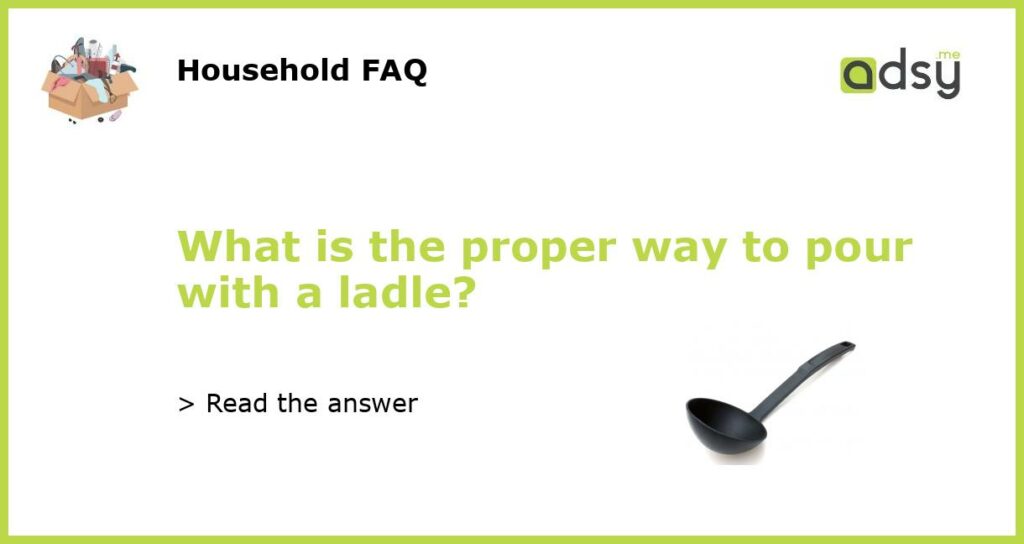The Art of Pouring with a Ladle
Using a ladle to pour out hot soup, stew or gravy can seem like a minor detail in cooking, but it can have a huge impact on the presentation and flavor of the dish. The proper way to pour with a ladle can make all the difference in the aesthetics and consistency of the final product. In this article we’ll cover the dos and don’ts of ladle usage to help you achieve a perfect pour every time.
Choose the Right Size and Type of Ladle
Ladles come in different sizes and shapes, each suited to a different purpose. For thin liquids like broth or consommé, use a smaller ladle to ensure more accurate portioning. For thicker liquids like soup or chowder, you’ll want a larger ladle to accommodate the chunks of meat or vegetables. Additionally, be sure to use the appropriate ladle for the material of the pot – a metal ladle for a metal pot, and a wooden ladle for a non-stick or enamel pot to avoid scratching the surface.
Position the Ladle Correctly
When pouring with a ladle, it’s important to hold it correctly for optimal control. Hold the ladle in your dominant hand with your index finger hooked around the top of the handle and the thumb resting on the bottom. For larger ladles, hold the handle close to the bowl for increased stability. Position the ladle slightly above the center of the bowl or dish and tilt it at a slight angle to allow the liquid to flow smoothly.
Avoid Over-Pouring and Spills
One of the biggest mistakes when pouring with a ladle is over-pouring, which can cause spills and messy drips. To avoid this, pour slowly and steadily, gauging the amount of liquid needed for each serving. Try to keep the ladle level to prevent spilling over the side and always pour over the plate or bowl instead of directly into the liquid to avoid splashing and uneven distribution.
Practice Makes Perfect
Like any cooking skill, mastering the technique of pouring with a ladle takes practice and attention to detail. Start with a small amount of liquid and work your way up, gradually increasing the speed and precision of your pouring. Pay attention to the appearance and consistency of the liquid as you pour, adjusting your technique as necessary to achieve the desired outcome.






